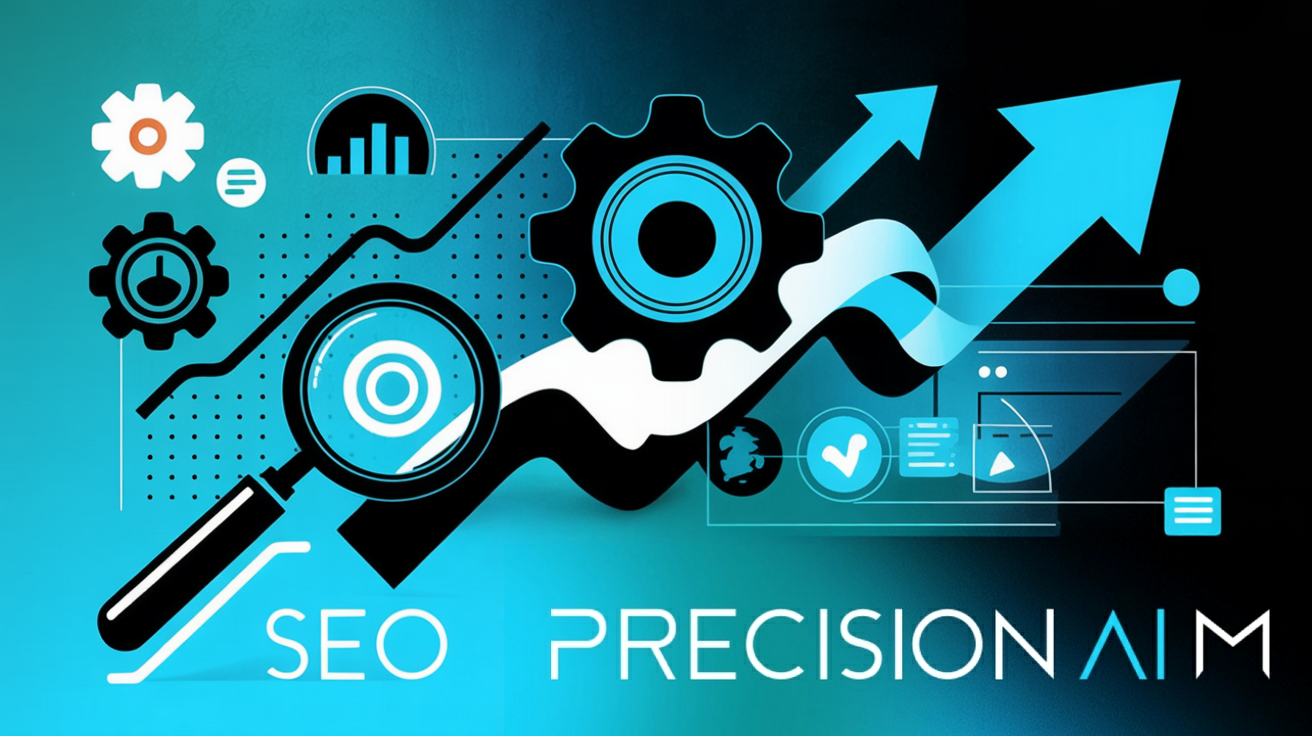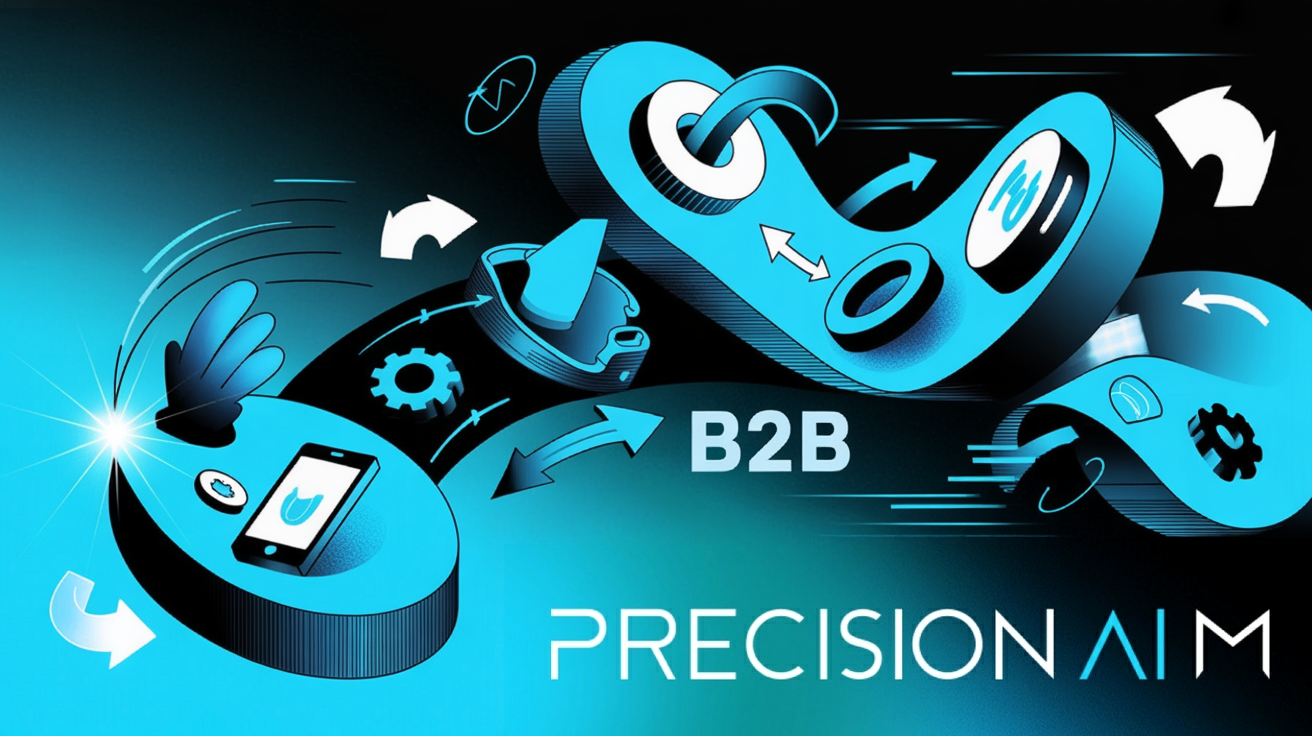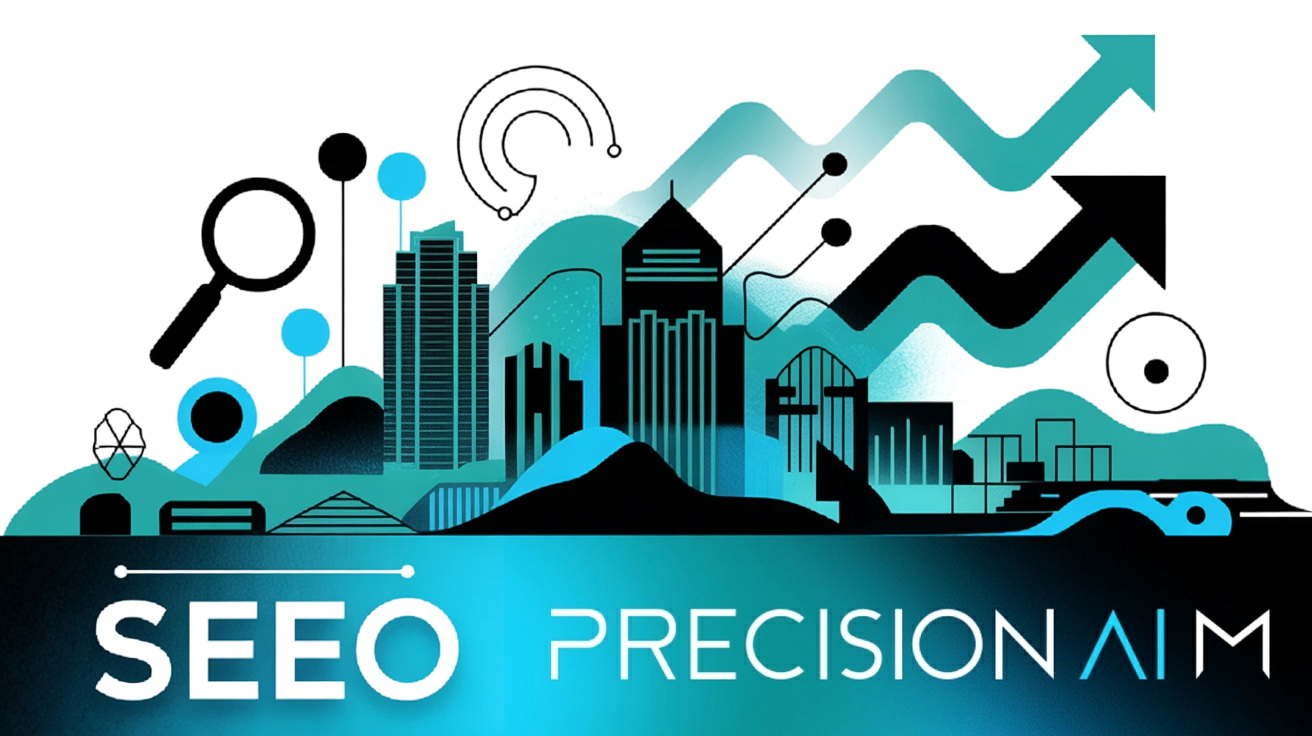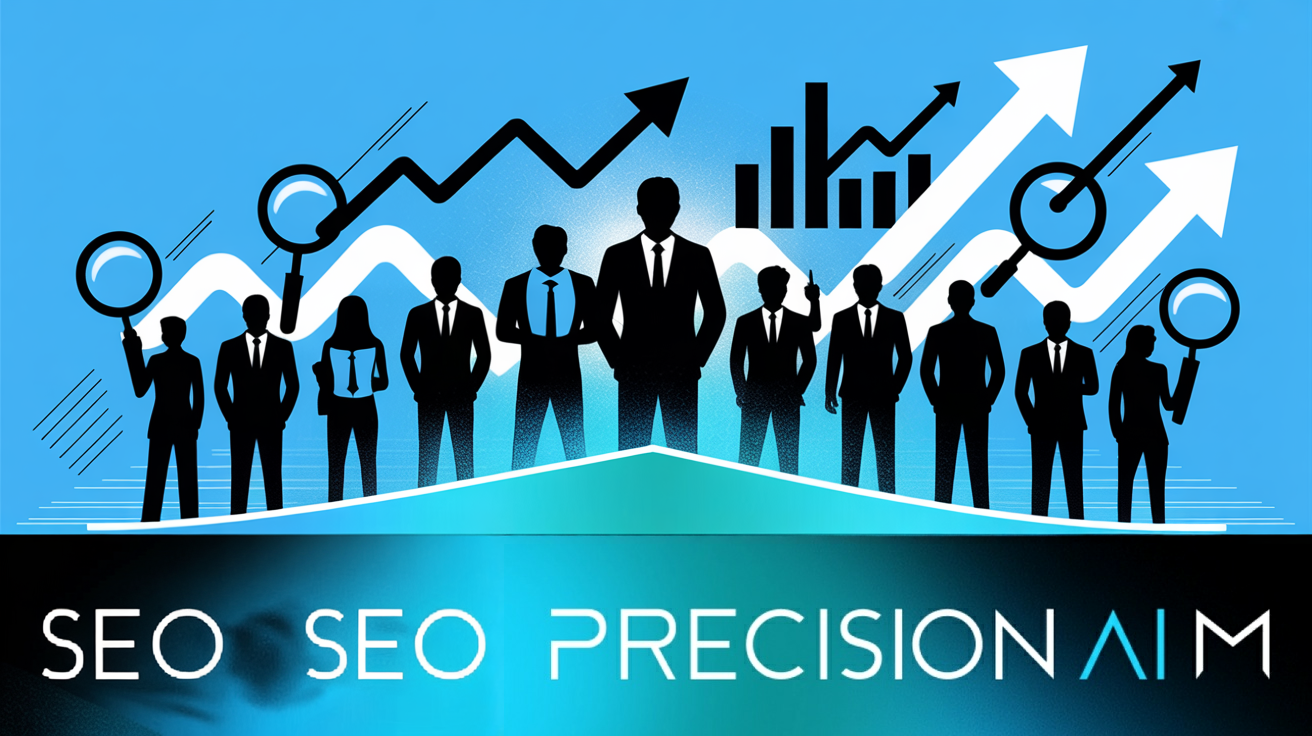Generating high-quality leads through SEO can feel like a slow grind, especially when budgets are tight and paid channels get expensive fast.
I've seen firsthand how organic search delivers leads with stronger intent and lower cost per acquisition, but only if you use the right strategies. Many marketers struggle to convert SEO traffic into actual prospects, or waste time chasing tactics that don’t scale.
In this article, I’ll break down ten proven methods for attracting and converting SEO leads, from keyword research and content clustering to optimising lead capture forms and leveraging automation. You’ll get actionable tips, real-world examples, and recommendations for free and paid tools that fit your business size and goals.
I’ll also cover how to measure results, avoid common mistakes, and adapt to new trends like AI-powered platforms and video content. By the end, you’ll know exactly which steps to take for a sustainable, cost-effective SEO lead pipeline.
What are SEO leads?
Definition and Core Attributes
When someone talks about an SEO lead, they mean a potential customer who discovers a website through unpaid, organic search results—and then does something valuable. For instance, maybe that visitor fills out a form or books a demo after arriving from a Google search, not from an ad.
Search Engine Optimization (SEO) lead generation is optimizing your website to appear in organic search results when potential customers search for your products or services on search engines like Google.
SEO leads always originate from non-paid search engine listings. They’re tracked in analytics or CRM systems, which pinpoints their source as organic search. What sets them apart? Each has taken a high-intent action that your business cares about, like requesting a callback or signing up for updates.
- Organic Origin
Arrive via unpaid search results, not through paid ads or direct campaigns. - Tracked Source
Identified in analytics/CRM as coming from search engines’ organic listings. - High-Intent Actions
Perform valuable steps like form submissions, demo requests, or newsletter signups.
How SEO Leads are Generated Through Organic Search
How do you actually attract SEO leads? It all begins with keyword research, understanding what your ideal customers are searching for. Next comes tailored content, meeting that search intent with pages and posts that answer real questions.
Technical SEO work is crucial too—making sure those pages are visible to search engines and users. Lead-capture tactics, such as well-placed forms and clear calls-to-action, convert that traffic into actual leads. In 2024, approaches like personalising pages for intent and aiming for featured snippets are pushing lead quality higher.
Here’s a real-world twist: when a SaaS company targeted “best HR software for remote teams” and improved their calls-to-action, demo signups jumped by 31%.
SEO Leads vs. Other Digital Leads
So, why do SEO leads get so much attention? The main reason is intent. People from organic search are usually closer to a buying decision than those who come via a paid ad or a social post. Paid channels might bring results quickly, but they require ongoing spend, and the quality of those leads often isn't as strong.
| Channel | Conversion Rate | Cost Per Lead |
|---|---|---|
| SEO | 4–7%+ | $28–$31 |
| Paid Search | 0.5–2% | $64–$300 |
| Social Media | 1–2.5% | $51+ |
Messente’s 2024 case study found SEO-generated leads converted at 6.1%, and cost much less than those from paid sources.
Across B2B industries, the average cost per lead from SEO is $52, less than half the cost of a lead from Google Ads ($125) and significantly lower than LinkedIn Ads ($86).
Importance of SEO Leads in 2024
In 2024, SEO leads are a genuine driver for business growth. High-ranking content delivers new leads over time, which means the cost per lead drops as your site matures.
Searchers tend to trust organic results, which builds authority and increases the chance they’ll convert. So, focusing on SEO offers a long-lasting, cost-effective pipeline—making it a strategic win for businesses chasing sustainable results.
How does the SEO lead generation process work?
Attracting Prospects Through SEO
Ever wondered how a simple Google search turns into a high-value lead? It’s all about making your website easily discoverable by people who are genuinely searching for what you offer. The trick? Start with high-intent keywords—the terms real customers are using.
You create content that’s not just loaded with those keywords, but actually useful and easy to read. Optimise your page titles, headings, and copy so they feel natural. Good navigation and quality information keep visitors sticking around. And don’t forget technical SEO: fast-loading pages, mobile-friendly design and a clean site layout make everything work smoothly for both users and search engines.
Setting up pillar pages and well-written FAQs can boost your perceived expertise, helping browsers trust your answers.
Here’s what’s new: savvy companies use AI-powered platforms such as SEOSwarm to automate tedious tasks like spotting keyword gaps and pumping out fresh content. As a result, scaling your organic reach becomes much quicker and less manual.

AI-Powered Content Strategy
See the AI platform that's replacing entire content teams (with better results).

Conversion Pathways and Lead Capture
It’s one thing to attract visitors; getting them to take action is where things get interesting. Make sure you have clear, appealing calls-to-action—like “book a demo” or “get a free resource”—to guide them forward.
Short, frictionless forms convert better than lengthy ones. Pop-ups, interactive tools and gated resources help prompt visitors to share their details. A/B testing page layouts and messaging refines what converts best.
From Lead to Customer
Bringing in a lead is just the beginning—the follow-up is what really counts. Sending emails and tailored content based on user behaviour helps keep their interest alive.
Segment leads by interests for targeted outreach. Share genuine results, personalise your messaging and time your contact right—analytics make it possible.
So, the whole process combines smart search attraction, strong lead capture, and thoughtful nurturing to build a reliable SEO lead pipeline.
What should you look for in SEO lead generation strategies and tools?
Core Factors for Evaluation
When you're deciding on SEO lead generation strategies or tools, you want something that delivers sustainable, high-quality results—not just a spike in numbers.
Start with lead quality. Nobody wants a pipeline stuffed with people who never convert. Focus on tools and strategies that attract leads matching your ideal customer profile and buying intent. Features like lead scoring and real sales feedback can make all the difference.
Don’t overlook data transparency. With privacy rules tightening, your tools need clear consent management, responsible handling of user data, and strong privacy policies to inspire trust.
Scalability matters too. As your business grows, you’ll need solutions that automate repetitive work and adapt smoothly, instead of holding you back.
Finally, cost-effectiveness can’t be ignored. Measure your spend against actual results—great tools provide analytics to track conversions and ROI with clarity.
Essential Features for Software Selection
Ready to pick out software? The features you choose will shape your process.
Check for system integration. Your lead generation should connect easily with CRM, analytics, and marketing platforms, keeping your data tidy and your teams in sync.
Performance tracking features—like dashboards, keyword monitoring, and AI-driven optimisation—let you refine campaigns as you go.
And finally, lead nurturing automation keeps your follow-ups prompt and ensures promising leads don’t slip away. That’s where higher conversions really start happening.
1. Mastering SEO optimisation and high-quality content creation
Targeted Keyword and Audience Research
Getting SEO lead generation right really starts with how you choose your keywords. It’s tempting to chase after those huge, high-volume search terms, but here’s the thing: in 2024, the smart move is actually the more focused one. High-intent keywords—phrases that show the searcher is pretty far along their buying journey—consistently attract leads ready to take action. Fancy the difference? If someone searches for “buy project management software UK” instead of just “project management”, they’re much more likely to convert. And the proof is there: companies using these high-intent keywords can see lead-to-customer rates above 12%, against just 2–5% for the catch-all terms.
Now, here’s where technology steps in and takes things up a notch. Modern AI-powered platforms like Search Atlas, Ahrefs, and SEMrush don't just find keywords—they cluster them by topic, surface overlooked long-tail phrases, and even keep an eye on what your competitors are doing. Take Threadsy, for example. When they started using Search Atlas’s clustering tools in 2024, they spotted 34% fewer content gaps and actually doubled the leads coming in through organic search within four months.
By leveraging AI for content scaling, marketing teams can accelerate their output from one article to 30 per month with ease, rapidly closing content gaps.
But having keywords is only half the battle. If you really want your strategy to be bulletproof, you need to listen to your actual users. The best marketers these days dig into support logs, customer interviews, and even social media comments. They want to know the exact words and real problems their audience are bringing up. The process goes like this: collect direct quotes, turn those insights into targeted keywords using your research tool, and review those trends regularly so you never miss a new pain point. That’s how Notion ended up seeing a 27% jump in demo bookings from quarter to quarter using persona-powered keyword strategies.
Topic Clusters and Content Structure
All those keyword insights? You’ll get far more impact by weaving them together in topical clusters. This is where a central pillar page covers a big topic, and then sub-pages branch out to tackle all the specific questions people are searching for. AI tools like BrandWell’s RankWell (before March 2025) take the manual grunt work out by generating topic clusters and producing SEO-optimised drafts for each subtopic—everything linked back to your main pillar automatically.
For a real-world win, look at Ravio, the compensation analytics company. By creating a thorough “equity compensation” pillar and building out supporting articles like “How Equity Compensation Drives Employee Loyalty in Startups”, then partnering with experts for backlinks, they drove up SEO leads by 30–50% and got faster conversions. This data-driven, cluster-led approach is what’s helping brands like Notion, Threadsy, and Ravio win the SEO lead game right now.
2. Optimising lead capture to convert SEO visitors effectively
Designing SEO-Friendly Lead Capture Mechanisms
So, what actually turns an organic visitor into a lead? It’s all about keeping every step smooth and building trust quickly. Top sites seamlessly combine embedded forms, well-timed pop-ups, chat capture, and non-stop A/B testing—mobile users especially benefit.
Embedded Forms (Above the Fold)
Placing forms atop high-intent pages increases completion rates by over 20%. Forms that load fast and flow straight to your CRM make follow-up easy. No redirects, just effortless conversion.
Pop-up Forms (Exit Intent, Time-Delayed)
Pop-ups, when gentle and mobile-friendly, can reach 12% conversion rates. Keep it light: a single field, well-timed trigger. Overdoing pop-ups? That only makes visitors bounce.
Chat-Based Lead Capture Tools
Live chat and chatbots help visitors engage instantly. B2B and SaaS sites now rely on these for 30–50% higher conversion rates compared to static forms.
A/B Testing and Mobile Responsiveness
A/B test forms—copy, layout, triggers. Those small tweaks? They mean a solid 10% uplift in submissions. If your forms aren’t built for mobile, leads drop off fast.
Minimising Form Friction
Fewer fields nearly double conversions. Features like autofill or multi-step forms remove hassle and make capturing leads effortless.
Interactive and Value-Based Elements
Want deeper engagement? Use quizzes, calculators, or instant assessments. These not only grab attention—they drive users to share better information.
Interactive Lead Magnets
Quizzes and calculators convert at 15–25%, about three times better than standard downloads. Their interactive nature keeps users interested and delivers richer insights.
Evolving Gated Content Strategies
Static PDFs are out. Dynamic resources—like instant audits—draw more submissions and help match the right content to the right user.
Ensuring High Perceived Value
Clear value promises—immediate results or actionable insights—make users far more likely to give accurate contact details.
Integration With CRM and Lead Workflows
Automatic CRM syncing gets leads segmented and followed up, so sales and marketing stay perfectly in step.
Best Practices for Calls-to-Action (CTAs)
Personalised CTAs guide visitors smoothly to convert. Small asks like “see instant results!” lower resistance and ongoing testing brings double-digit conversion gains.
Clarity, Trust, and Compliance
Clear promises and privacy build trust—and trusted sites always enjoy higher conversion rates.
3. Leveraging free tools and organic tactics for SEO lead generation
Essential Free SEO Tools
Starting out in SEO lead generation? Free tools offer immediate insights—no cost, no risk. You can make content tweaks, run site checks, and track leads without spending a penny.
- Google Search Console
Shows which queries and landing pages are pulling in leads and flags technical issues. - Google Analytics
Maps the route from first organic visit to conversion. - Ahrefs Webmaster Tools and Semrush Free
Provide competitor peeks, keyword tracking, and quick site audits. - Other Notable Free Tools
Moz Keyword Explorer, Ubersuggest, and Keyword Surfer highlight long-tail opportunities and validate search demand.
For small businesses, these tools manage the basics—keyword research, site fixes, and seeing what your competition is up to. They do have limits: data updates are less frequent, there are query caps, and integration options are limited.
When your needs grow, consider upgrading for deeper analytics and broader features.
Organic Tactics for Lead Growth
What about cost-free tactics with maximum punch? In 2024, the classics are still winning—driving high-quality leads for those who use them well.
- On-Page SEO With Long-Tail Focus
Intent-rich phrases can deliver triple the conversions for niche audiences. - Local SEO and Listings Optimisation
Improved profiles and reviews win trust and attract local leads. - Programmatic SEO Approaches
Automate landing pages to expand to untapped searches. - Non-Paid Outreach Initiatives
Guest posts, co-marketing and podcasts boost your reputation and links. - Strategic Content Sharing and User Advocacy
Customer stories and forums extend reach in an authentic way.
Bringing together free tools and proven tactics sets you up for sustainable, low-risk SEO lead growth.
4. Boosting SEO leads with social and community engagement
Content Amplification via Social Channels
Sharing SEO-driven content on LinkedIn, X, and Facebook is more than routine—it’s a way to get your brand in front of the right eyes quickly.
Turn in-depth guides into infographics or punchy short posts and watch referral visits leap by up to 40%. That’s a result worth chasing.
Always link social posts to your main keyword clusters. Consistent hashtags and keywords, plus relevant links, drive both engagement and your search rankings.
Don’t forget your profile: strong branding and eye-catching calls-to-action have prompted a 23% rise in leads direct from social.
Wondering if it works? Just monitor referral traffic, keyword movements, social-attributed leads, and content shares.
Community Engagement and Niche Participation
Looking for even higher quality leads? Dive into online communities—think LinkedIn groups, Reddit, or industry forums—where genuine engagement builds real authority.
Share useful answers or trusted resources. Skip the hard sell; people respond better to authenticity, boosting inbound enquiries and those precious backlinks.
You can even branch out by using Pinterest or niche portals for new SEO lead sources. Brands who connect this way have seen referral leads grow by 27%.
Employee Advocacy and Thought Leadership
Here’s where things multiply: empower your team to act as brand advocates. When staff post company content on LinkedIn or X, engagement can double.
Encourage in-house experts to publish their own takes or share insightful videos. This builds authority and aligns beautifully with SEO goals.
Get organised with advocacy platforms and playbooks—a move that’s delivered up to 200% growth in SEO-attributed leads for some brands.
5. Using paid methods to accelerate SEO lead generation
Paid Search and Display Campaigns
Let’s face it—waiting for organic SEO results can test anyone’s patience. This is where paid search and display campaigns really kick things into gear. By bidding on high-intent keywords in Google Ads or Bing, you put your site in front of those already searching for your offer.
But here’s the catch: success isn’t about just splashing the cash. The savviest teams are constantly tweaking bids—sometimes every hour—using algorithms to get the best value. Costs can climb to £1–£6 per click in B2B niches, yet conversion rates often hit 4–7%. If you keep your tracking tight, those numbers stack up fast.
Neglect tracking and costs spiral. Hook every campaign into your CRM and watch which keywords actually result in deals, not just clicks. If quality dips, pause campaigns before budgets burn.
Sponsored Content and Native Ads
You know those “in-depth” guides on big industry platforms? Often, they’re sponsored content or native ads—expert content that feels organic but carries clear promotional intent. The best play here is choosing publishers your targets already lean on for advice.
Create content that’s educational yet nudges readers toward your SEO priorities. Always track leads, not just views. The big win? Native placements are trusted, so leads feel warmer.
But get sloppy, and blurred lines can land you in regulatory hot water. Keep all messaging honest and marked as paid.
Direct Paid Outreach
Sometimes, reach comes from making the first move. LinkedIn message campaigns or precision-targeted emails zero in on ideal buyers by job title or company size. Align messaging with your SEO landing pages for a consistent experience.
Short, direct outreach outperforms generic blasts. Remember to test and measure—track opens, clicks, and signups, not just send volume. Poor targeting risks annoying people or harming your brand, so tailor wisely.
Integrating Paid and Organic for SEO Lead Growth
Here’s where things get clever: combine paid and organic strategies, letting learnings from one sharpen the other. Early ad data reveals which keywords and pages convert fastest—feed them into your SEO plan.
Regular A/B testing aligns both channels. Over time, this fusion builds a lead engine that’s both quick and sustainable, letting you ramp up results without losing sight of long-term growth.
6. Buying or outsourcing SEO leads: what you need to know
Identifying Reliable Lead Providers
Wondering how to choose the right SEO lead vendor? Sourcing transparency is your starting line. Reliable companies spell out exactly where their leads come from—whether through organic content or genuine opt-in campaigns.
Names like UpLead and LeadCandy set the bar with public guarantees on lead validity, strong fraud detection, and real-time verification. If a provider promises exclusive delivery, that’s a game-changer; it means leads are yours alone, removing direct competition.
Trusted vendors hand over sample reports, dashboard access, and full documentation around GDPR and CCPA compliance. Extras like bounce-rate guarantees and list scrubbing help keep legal distractions at bay.
Don't forget to check for written refund and replacement policies. Recent client references are the simplest way to verify reliability.
Actionable Vendor Validation Checklist
- Business Legitimacy
Registered officially and verifiable by trusted authorities. - Written Exclusivity
Documented promise that your leads aren’t shared or resold. - Consent/Compliance Records
Opt-in proof and audit credentials for GDPR/CCPA. - Financial Stability
Long payment record and business history. - Transparent Reporting
Sample reports and dashboard access should be readily supplied.
Before buying, expect agreements, consent templates, audit trails, and contact details for compliance officers.
Evaluating Cost and ROI
Let’s break down the numbers. In 2024, exclusive, verified SEO leads cost about $40–$150 each, while shared leads run $15–$45.
Exclusive leads convert at 7.4%, with shared lists just scraping 1.1%. For ROI, use (Number of Leads × Conversion Rate × Average Deal Value – Spend) ÷ Spend.
B2B buyers often see 50–230% higher ROI from exclusives, with overall revenue comfortably beating cost.
Going cheap on leads? You’ll get more complaints and wasted spend than value.
Risk Management and Trust Factors
Ever spotted vague sourcing or wild claims? Take these as warning signs. Good providers always show sample data and offer up client references without hesitation.
Big buyers like Cisco and HubSpot ask for references, compliance audits, and continuous reporting. Mirroring this approach protects your brand and guarantees top-notch, sustainable SEO lead sourcing.
7. How to vet and qualify SEO leads for higher conversions
Lead Vetting Essentials
Here’s a key question: how do you know if a lead is truly worth your attention? The first move is to demand exclusivity. If your leads are recycled or resold, your chances of success drop dramatically.
Work only with providers who guarantee, in writing, that leads remain unique to you. Ask for opt-in logs or verifiable source data; genuine providers supply these without hesitation. The best vendors back up their promises with refund and replacement guarantees if any lead proves invalid.
Automation tools like NeverBounce or BriteVerify quickly sweep out bad contact details. Early filters—by industry, role, size, or engagement—help your team concentrate on the most promising opportunities. Skip vetting, and you’ll waste resources or worse, put your brand reputation at risk.
Qualification Frameworks in Action
But vetting only gets you so far. Spotting those ready to buy is what matters. That’s where frameworks like BANT or MEDDIC shine, identifying key buying signals right at the start. Many businesses weave them into forms, chatbots, or outreach flows.
More advanced, AI-powered solutions go even further—matching leads to your ideal profile and elevating the warmest prospects. Ignore this, and you’ll chase lost causes while genuine leads slip away.
CRM Integration and Lead Nurturing
None of this matters if you aren’t integrating with your CRM. Automated scoring, smart segmentation, and timely follow-ups keep your pipeline moving.
Personalised nurture campaigns help ensure great leads don’t fall through the cracks. For modern, growth-driven teams, integrating vetting and qualification with your CRM is absolutely vital.
8. Harnessing automation and AI-powered tools for scalable SEO leads
Top Automation Platforms and How They Work
Think about how AI and automation have transformed SEO lead generation. Campaigns scale rapidly, targeting grows sharper, and analytics run in the background. You’ll find fully AI-powered tools for speed, and hybrid platforms blending in human strategy. Now, nearly everything from keyword research to outreach can be automated—saving time while upholding full compliance.
SEOSwarm: Features, Benefits, and Core Differentiators
SEOSwarm, by Precision AI Marketing, mixes powerful AI with expert human oversight. The platform handles every stage in the SEO content journey: research, writing, optimisation, and publishing—all double-checked by specialists.
- Editorial safeguards
protect regulated sectors. - Persona-driven AI training
maintains messaging accuracy. - Blog-in-one-minute feature
powers instant launches (with extra subscription). - Automated calls-to-action and built-in promotion
It’s perfect for brands demanding strict compliance and scalable content—making it efficient compared to agency models.
Blog-in-one-minute
Add a fully SEO-optimised blog to your website with just 2 lines of code.
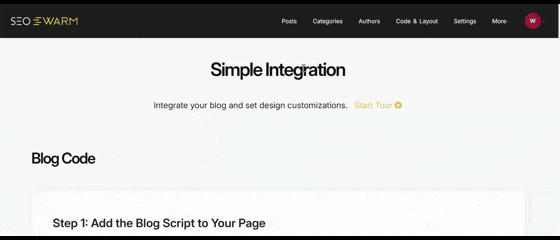
Other Leading Tools: Surfer AI, Jasper, Lindy, Customers.ai, Seamless.AI, Copilot AI
Surfer AI taps live search data for fast optimisation. Jasper creates wide-reaching content with branding presets. Lindy streamlines outreach and CRM syncing. Customers.ai deploys chatbots for qualification, while Seamless.AI and Copilot AI take on B2B prospecting. Pure AI gives rapid scale, though it can miss polish and may not suit regulated sectors.
But the hybrid solutions add robust compliance and quality layers, especially crucial for finance, law, and healthcare.
Real-World Use Cases and Outcomes
How Automation Streamlines Blog Strategy
Here’s something impressive: brands now launch 50–100 SEO pages in just weeks—two to three times faster than before. SEOSwarm helps maintain standards for regulated industries. Pure AI needs some human tweaking at final review.
Accelerating Lead Capture, Nurturing, and Conversion
Automations and chatbots, like those from Customers.ai and Seamless.AI, trim response times by 60% and boost qualification rates by 35%. Jasper’s nurture flows lifted conversions by 28% in recent SaaS trials.
Choosing the Right Platform for Your Needs
Quality vs. Quantity Tradeoff
AI-only tools prioritise fast scaling, but platforms like SEOSwarm deliver expert-reviewed quality—non-negotiable for industries needing tighter controls. Manual review? Still critical for sensitive content.
Scaling With Cost-Efficiency and Expertise
Startups chase speed with AI-first tools, but as they grow, hybrid platforms such as SEOSwarm support quality, compliance, and brand integrity. That’s how scalable SEO leads stay reliable and cost-effective.
9. Measuring and optimising SEO lead generation performance
Essential Metrics to Track
Tracking your SEO lead generation isn’t just about ticking boxes—it’s how you keep on improving and making sure you get a proper return. So, where do you start? Begin with organic traffic. GA4 and Search Console make it easy to monitor sessions, top landing pages, and spot any shifts. Sudden changes? They often signal technical hiccups or new opportunities.
Drill down to the metrics that truly matter next: SEO lead volume—how many people submit forms, book demos, or download assets because of organic search—and organic conversion rate, meaning what percentage of visitors actually turn into leads. Check these monthly, then compare them across your paid and social channels for meaningful benchmarks.
While overall organic traffic is important, knowing how many of those visitors convert into leads is what truly matters. This metric directly ties your SEO efforts to business growth.
Going deeper, your secondary metrics round out the picture. Think Marketing Qualified Leads (MQLs), Cost Per Lead (CPL), Click-Through Rate (CTR), and measures like bounce rate or session length. Revenue attribution tools, such as Ruler Analytics, connect the dots from keyword to signed deal. Here’s what stands out: Cognism reported 37% of inbound demos came via SEO, while HubSpot noted SEO factored in 41% of their closed B2B deals.
Analytics and Optimisation Techniques
So, how do you make these numbers count? Tag every organic lead and map them into your CRM—suddenly, your website’s performance aligns with your whole pipeline. This makes forecasting and attribution much easier.
A/B test your landing pages, forms, and CTAs regularly—prioritising the ones that aren’t getting results. Oktopost’s custom landing pages saw a clear jump in conversions and better lead quality. Dig into behaviour analytics like heatmaps or survey feedback to spot exactly where users get stuck.
Don’t forget the basics. Page speed, mobile compatibility and accessibility need regular checks, since all three impact conversion rates. Salesforce actually lifted lead qualification by 18% when they combined predictive analytics with CRM integration.
| Practice/Metric | Brand Example | Tool/Model Used | Result |
|---|---|---|---|
| Multi-touch attribution | Cognism, HubSpot | Ruler Analytics, CRM | 37% demos or 41% deals from SEO touch |
| Predictive analytics | Salesforce | Alteryx + CRM | 18% more qualified leads |
| Landing page optimisation | Oktopost clients | Custom landing pages | Higher conversions, better quality |
So, if you want sustainable growth, treat measurement and optimisation as the heartbeat of your SEO lead engine.
10. Trends, challenges, and common mistakes in SEO lead generation
Emerging Trends and Opportunities
SEO lead generation keeps reinventing itself in 2024, with new habits, fresh privacy rules, and the unstoppable rise of video. You can see the impact—87% of marketers report a bump in site traffic from videos, and landing pages with them convert at 4.8% compared to just 2.9% without.
There’s another shift to watch. Voice and visual search are surging, especially among younger users—27% of global mobile users use these, and 78% of voice queries send someone to a business within a day.
Why do brands like Mayo Clinic and NerdWallet nail SEO? Their secret is meeting Google’s E-E-A-T standards—Experience, Expertise, Authoritativeness, Trustworthiness—by sharing content led by real experts.
As third-party cookies disappear, more brands are doubling down on first-party data with interactive and gated content. AI-driven keyword clustering and intent mapping help with personalisation, but closing the intent gap is still tricky for many.
Biggest Challenges and How to Address Them
Struggling with lead quality? You’re not alone—61% of marketers say the same. Responding slowly is costly too; 80% of conversions slip away if follow-up lags.
Add in tech shortages and tracking headaches. Tools like Salesforce Einstein help, cutting response times below twenty minutes and bumping up conversions by 32%. HubSpot drives a 19% increase in MQLs.
To keep winning, clean your data, enrich leads, and connect sales and marketing. Cisco, for example, spiked SEO traffic by 45% by pairing automation with campaigns—a solid move for small teams too.
Common Mistakes to Avoid
Chasing poor-fit leads and forgetting data or nurturing undercut your results. Miss conversion optimisation and rates can sink by 20–40%; slow replies can halve closures.
Only a quarter of top-ranking pages have strong meta descriptions—you lose clicks without them. Audit leads, foster genuine backlinks, and watch your mobile and CTA performance to sidestep these traps.
My Final Thoughts on Quality SEO Leads
Most businesses chase more SEO leads, but the real winners focus on quality, not just quantity. I’ve seen firsthand that high-intent keywords, seamless lead capture, and smart automation consistently outperform scattershot tactics and bloated lists.
If you want results, here’s what I recommend: - Prioritise keyword research that matches buyer intent, not just search volume. - Build topic clusters and pillar pages to establish authority and drive compounding traffic. - Use embedded forms, chat, and interactive tools—then A/B test everything for higher conversions. - Automate repetitive tasks with AI, but always review for quality and compliance. - Track every lead in your CRM and refine your process based on real conversion data.
SEO lead generation isn’t about chasing every trend or shortcut. It’s about building a system that gets smarter, faster, and more effective with every cycle. The brands that win are those who treat SEO as a living engine—always learning, always improving, and never settling for yesterday’s results.
- Wil


